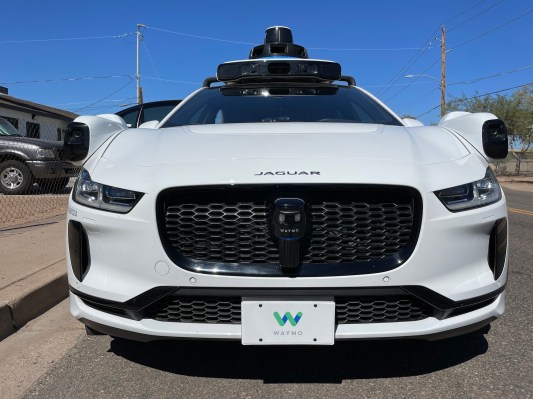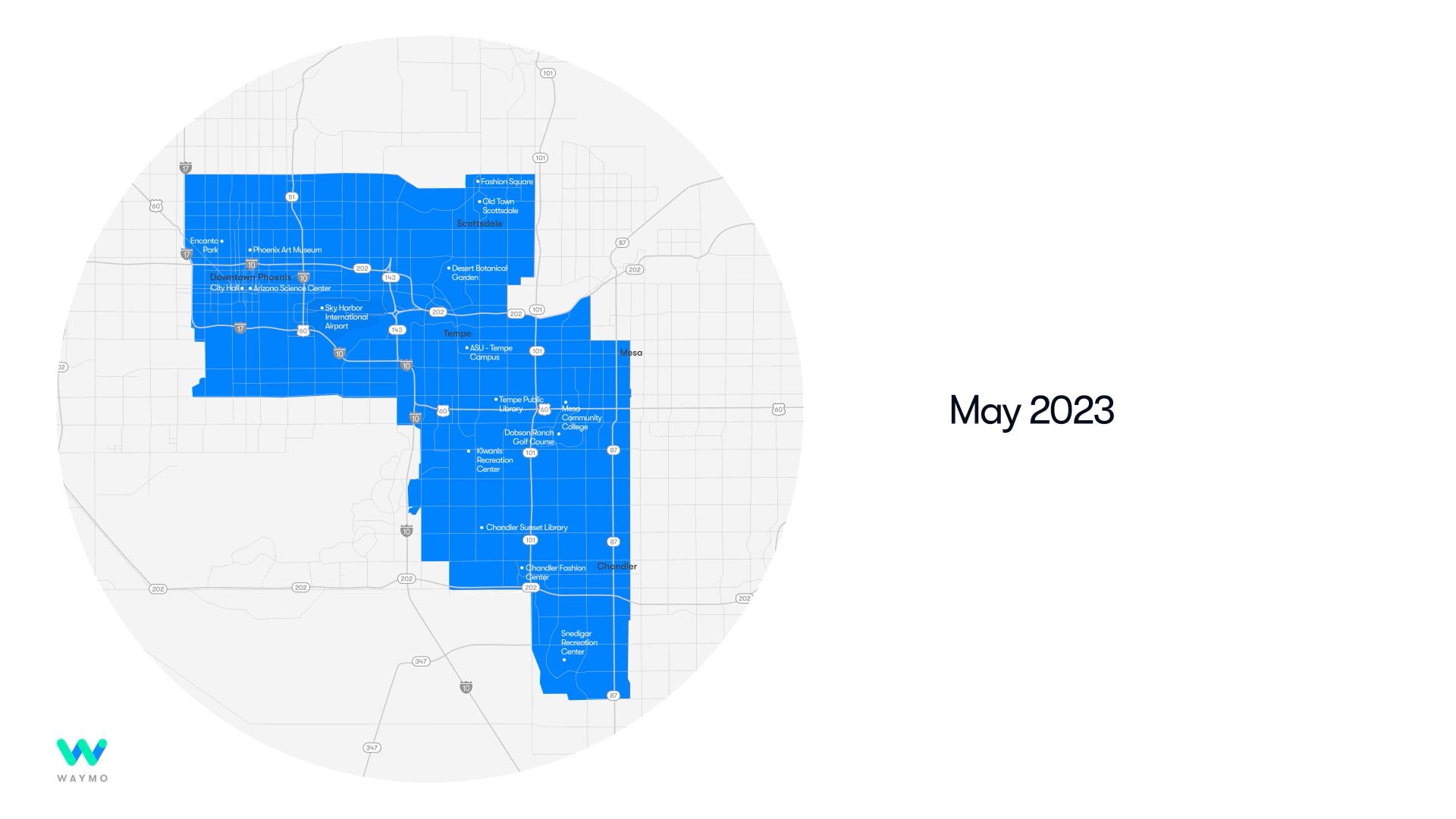Waymo is doubling its commercial robotaxi service area in the Phoenix metro area, an expansion that will add new suburbs and connect previously isolated sections of the sprawling and car-dependent desert city.
The service area, which now includes Scottsdale, nearly all of Tempe and larger sections of Chandler and Mesa, is 180 square miles in size. That’s about one-third of the 517-square-mile Phoenix metro area. Importantly, it connects downtown to Arizona State University in Tempe and other East Valley suburbs. The former Google self-driving project under Alphabet is also adding a second location that accesses the Phoenix Sky Harbor International Airport. Riders can already get to the airport by taking a Waymo robotaxi to the 44th Street Phoenix SkyTrain Station, which has frequent round-the-clock trains to the main terminals. Waymo robotaxis will now pick up and drop off passengers at the new 24th Street PHX SkyTrain Station.
A larger service area, particularly one that allows for riders to take driverless Waymo vehicles from one suburb to downtown or to the airport, is critical for the company to grow its business and generate more revenue. The expansion will also help the company scale beyond the 10,000 autonomous trips that public riders take each week in Phoenix and San Francisco combined, Waymo Chief Product Officer Saswat Panigrahi said in a media briefing. Panigrahi did not disclose what percentage of those rides were in Phoenix, where it can charge.
“We’re clearly excited about the trajectory we’re going to be on and we believe we can hit 10x of that scale by next summer, roughly,” Panigrahi said.
Phoenix has been an important launch pad for Waymo — and the only city where it is currently allowed to charge for rides.
It’s where the company began testing its self-driving Chrysler Pacifica minivans in suburbs like Chandler in 2016 and expanded the following year with its early rider program, which gave vetted members of the public access to the vehicles (always with a human safety driver behind the wheel). Waymo removed employees and passengers from its test fleet in 2017, sending empty self-driving minivans onto the streets of greater Phoenix. Waymo began in May 2018 allowing some early riders to hail a self-driving minivan without a human test driver behind the wheel. By December of that year, the company launched its commercial robotaxi service called Waymo One in Phoenix.
Waymo is also putting its resources into growing its service area in San Francisco, despite the lack of revenue. Waymo is still waiting for the California Public Utilities Commission to issue the final permit that will allow the company to charge for rides in its driverless Jaguar I Pace vehicles.
The company said Thursday it is adding more people to its Waymo One service, which gives them access to the app and the ability to hail a driverless vehicle.
Waymo’s aspirations to add more self-driving vehicles to its fleet and expand its service area has hit some speed bumps. Videos of Waymo and rival Cruise vehicles clogging streets have circulated on social media, prompting city officials and some residents to criticize the technology. Earlier this year, San Francisco transportation officials sent protest letters to the CPUC asking the agency to slow down the companies’ expansion plans.

